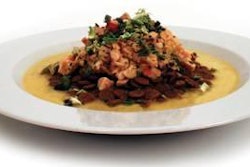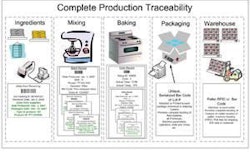There are few reported estimates of amino acid (AA) kinetics in adult mammals; none exist in adult dogs. The study objectives were to evaluate the use of oral isotope delivery in contrast to the more commonly used intravenous (IV) delivery to estimate AA kinetics in adult dogs and splanchnic extraction and gastric emptying using a commonly accepted mathematical model. Adult mixed hounds received half-hourly meals (13 g/kg body weight/day) and either an oral or IV bolus of l-[1-13C]phenylalanine (Phe) (12 mg/kg BW). Blood samples were taken immediately before each feeding.
There were no differences in baseline plasma Phe concentrations, Phe distribution volume, Phe pool size or rate constants among dogs when the tracer was administered IV or orally. Decay curve for plasma l-[1-13C]Phe differed between IV and oral dosing protocols. IV dosing fit best using a two-compartment model.
Phe disappeared from plasma at a mean rate of 2.8%/minute. Estimates of gastric emptying and splanchnic extraction did not differ based on oral or IV tracer dosing when the decay curves were fit with the two-compartment model. The half-life for gastric emptying was 18 minutes, and first-pass Phe extraction by the splanchnic bed was 24% of the dietary Phe.
These results suggest oral isotope dosing can be used as an alternative to IV isotope dosing in studies using a primed, constant dosing approach to measure protein and amino acid kinetics.
Source : M.A. Gooding et al., 2011. Oral and intravenous l-[1-13C]phenylalanine delivery measure similar rates of elimination when gastric emptying and splanchnic extraction are accounted for in adult mixed hounds1–4. JAPAN online November 2011. doi: 10.1111/j.1439-0396.2011.01256.x
















